Sweet Home Chicago
One of the most covered songs in Blues history, Sweet Home Chicago will always be associated with two things: the town that clearly inspired it (that would be, uh, Chicago) and the man who wrote it, Robert Johnson. Both obvious, right?
Well, sorta kinda.
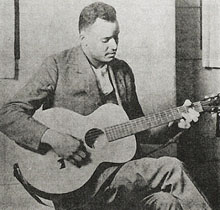 |
Johnson recorded Sweet Home Chicago at his first recording session for Vocalion Records in 1936. But eight years earlier, Indianapolis-based Scrapper Blackwell (right) was singing the praises of another city in very similar fashion: Kokomo, Indiana. That song begins:
Mmmm
Baby don't you want to go
Pack up your little suitcase
Papa's going to Kokomo
If you think those lyrics bear more than a passing resemblance to Johnson's, check out the music.
Audio Clip: Scrapper Blackwell's Kokomo Blues, 1928
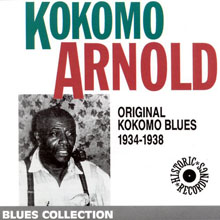 |
Several years later, James Arnold recorded a cover of the song under the title Old Original Kokomo Blues. It was his first single for Decca and after scoring a minor hit with it he was known as "Kokomo" Arnold. In his version you hear two lyrical additions that nudge the song closer to Johnson's. First, you have the math in the verses: "1 and 1 is 2", etc. The chorus, too—which you see below—is morphing into ours. The inscrutable "level light city" line apparently makes reference to a notorious stretch of traffic lights in Kokomo, one that has earned it another nickname, Stop Light City.
Crying oh
Baby don't you want to go
Back to that that level light city
To sweet old Kokomo
Audio Clip: James "Kokomo" Arnold on Old Original Kokomo Blues
So along comes Robert Johnson a couple years later and—likely in that great musical tradition of avoiding royalty payments—he gives the song his personal stamp not only by singing and playing in his inimitable style but by changing Kokomo to Chicago, which of course means changing Indiana to...California?
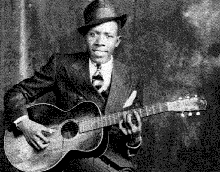 |
If all you've ever heard is our version of the song then you've never heard the lyric Robert Johnson himself sang, which reads:
Oh
Baby don't you want to go
Back to the land of California
To my sweet home Chicago
Now if you really, really enjoy erudite speculation as to how or why—geographically, poetically or personally—that chorus could make one wit of sense, then you are going to have a field day with this one. Several field days. For my part, I'm more inclined to enjoy Johnson's recording—as splendid as it is nonsensical—and simply note that hardly anyone sings it that way anymore, presumably because whatever sense that "California" line made in 1936, nowadays it just confuses our GPS.
Audio Clip: Robert Johnson's Sweet Home Chicago, 1936
As mentioned at the outset, Sweet Home Chicago is one of the most covered tunes in Blues history, so there's no point in even attempting a thorough survey here. But here are three audio clips that will give you a feel for the variety of approaches that different artists have taken to playing this song.
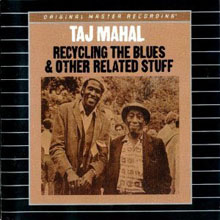 |
First, a 1972 recording by Taj Mahal on a resophonic guitar with no less than The Pointer Sisters adding backing vocals. While you're enjoying this cut, save part of your brain space to notice the structure they use: after singing the first four bars of the verse, Mahal starts a full 12-bar chorus in which the "C'mon, baby don't you want to go" line is repeated twice, over two bars each of IV-I. In effect, this turns the tune into a 16 bar blues whenever a verse is sung. You may encounter that structure at a jam, so consider yourself forewarned.
Audio Clip: Taj Mahal and the Pointer Sisters on Sweet Home Chicago
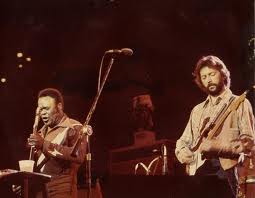 |
A little bit Texas (where he was born) and a little bit Chicago (where he moved with his family at 15), Blues icon Freddie King recorded several different takes on this song. Though he himself was an influential guitarist, this particular live recording from a Blues Masters compilation features more ivory than ebony.
Audio Clip: Freddie King sings Sweet Home Chicago
One of the better known guitarists King influenced was Eric Clapton. The two are shown together in the photo to the right. So let's go out with one of Slowhand's many recorded takes on the RJ classic, this one with Steve Gadd on drums and Billy Preston on organ.
Oh, that California line I said nobody sings? He does. But then, he's Eric Clapton.
Audio Clip: Clapton on Sweet Home Chicago
All Community Guitar Resources text & material © 2006 Andrew Lawrence
